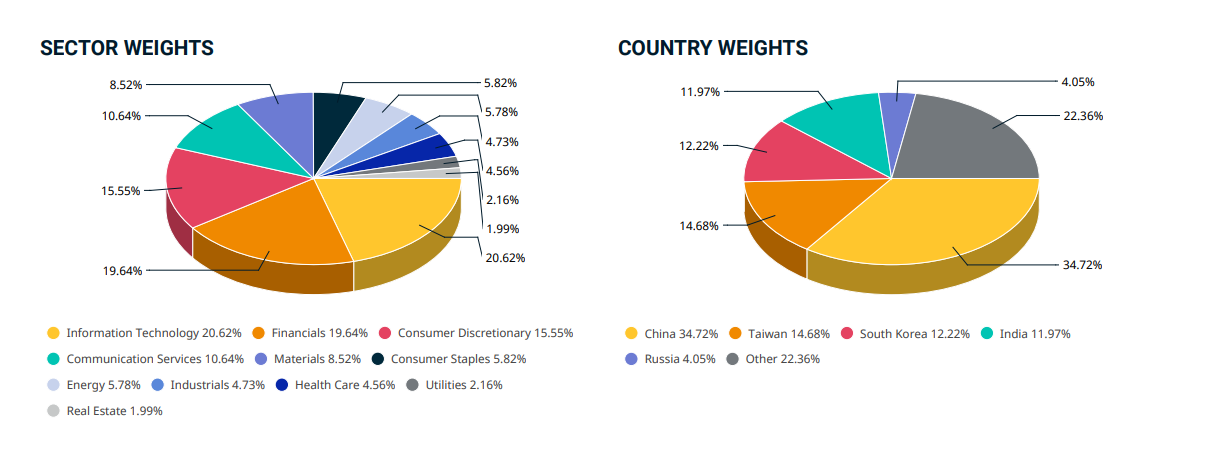Know what’s in your ETF
Years ago, when going through an introductory course on contracts law, I came across a great quote: "Laws are like sausages — it is better not to see them being made.”
Forgive me as I try to work a food analogy into a note about exchange-traded funds.
As investors, we have a choice to either purchase direct securities (the “meat”) and try to work that into a tasty meal ourselves (a portfolio) — or, we can “employ” a manager in the form of a managed fund or ETF provider to portion all the meat together for us (the “sausage”).
Unlike laws, we should take an avid interest in “how the sausage is made” and what sits behind the financial products we may include in our own investment universe.
Peter Lynch famously said: “You have to know what you own, and why you own it”. The same is true of an ETF just the same as a single equity or bond.
Today, we’ll go through some examples of how you should scrutinise when buying an ETF, to make better-informed investment decisions and be aware of the real exposure you are taking.
A universe of ETFs
According to Statista, there were 7,602 ETFs listed worldwide at the start of 2020, and I’d make a fairly safe prediction that by the next time that number is updated it will be well in excess of 8,000.
There are many asset classes and categories these ETFs may fall into, with the below being a non-exhaustive list of what we consider to be the main categories:
Source: Mason Stevens
A limited word count prevents an exploration of every category, the main topics at hand for this note will be alternative ETFs, as well as passive ETFs and understanding what the indexes actually cover.
Alternative ETFs
There are multiple styles of alternative ETFs:
- Equity volatility-linked ETFs
- Interest rate volatility-linked ETFs
- Leveraged short ETFs
- Leveraged long ETFs.
The example we’ll use for scrutiny of alternative ETFs will be leveraged ETFs, and we’ll go leveraged long to make the example a little more user friendly.
Imagine that on Day 1, you purchase $10,000 of the ProShares Ultra QQQ ETF (NYSE:QLD), which seeks to provide 2x the daily return of the NASDAQ 100.
For sake of the maths, we’ll imagine that the NASDAQ-100 is trading at 10,000.00.
On Day 2, the NASDAQ-100 increases to 10,500, gaining 5%. Your investment in QLD is now worth $11,000, a 10% gain to double the daily move of the NASDAQ. So far, so good.
On Day 3, another great day for the NASDAQ-100 as it rises to 11,550, a 10% rise. Your investment in QLD increases to $13,200, a 20% gain. But notice now that in only two days you are now actually 2.06x the gain of the NASDAQ-100 — a positive drift, but a drift nonetheless.
On Day 4, some terrible macroeconomic news emerges which rocks market sentiment and sends equities plummeting. The NASDAQ-100 loses all its gains and falls back to 10,000, representing a 13.42% decrease. Your investment in QLD doubles that return and is now worth only $9,657.14.
In only four days, a volatile underlying index has caused your leveraged ETF to underperform by nearly 3.5%. The more volatile the index the ETF is tracking, the more likely the daily rebalancing of the ETF (to reset its leverage ratio) will cause a drift, also known as “slippage”.
|
Day |
NASDAQ 100 |
Index % Change |
2x Cumulative |
2x Daily (ETF) |
|
1 |
10,000.00 |
$10,000 |
$10,000 |
|
|
2 |
10,500.00 |
5.00% |
$11,000.00 |
$11,000.00 |
|
3 |
11,550.00 |
10.00% |
$13,100.00 |
$13,200.00 |
|
4 |
10,000.00 |
-13.42% |
$10,000.00 |
$9,657.14 |
Source: Mason Stevens
It is essential to remember that these are daily trading instruments, not an investment vehicle or long-term hedging position.
Consider the implications of that daily timeframe: your timing must be correct to the day, and you have to account for the time it takes for the ETF to even settle in your account, which is usually T+2 or T+4 — meaning that you may be waiting almost an entire trading week to be able to trade out of the daily instrument you purchased.
Know your index
Knowing what makes up an index is just as important as picking the right ETF to track your particular investment theme or thesis.
In an obligatory “friend who works in markets” call last week, a friend told me he was concerned about volatility in Asia and about holding a China ETF, so he sold his (and his parents) holdings in the VanEck China New Economy ETF (ASX:CNEW) to take up an emerging markets ETF instead.
The idea behind his thinking was that emerging markets would be dominated by the likes of India, Brazil and smaller Asian countries such as Vietnam.
A cursory glance at the PDF for the MSCI Emerging Markets Index, which ASX:IEM tracks, would have revealed a slightly different reality:

Source: MSCI
China takes up 34.72% of the index, and if he’s worried about volatility or the political environment in Asia, you can throw Taiwan’s 14.68% into the mix to show that his replacement still holds about 50% direct exposure to what he’s concerned about.
(If you’re reading this mate — sorry to use you as an example.)
My friend is not alone in this assumption about emerging markets, or about broad indexes in general.
The name of an ETF may not describe what it actually tracks in intricate detail.
For example, if you don’t Google it, can you tell me what it is the Vanguard Total Stock Market ETF (NYSE:VTI) actually tracks? If you guessed the “CRSP US Total Stock Market Index”, you’re probably cheating — but those without a US bias might guess “total stock market” to think all global markets, not just the US.
The proof is in the pudding
This is not an exhaustive list of checks you should do before buying an ETF, far from it — knowing what you own is merely one part of a full and robust investment process.
If there’s a key message to take away from this note, it would be this: Just because you are buying an investment product, rather than an individual security, does not mean you should take the due diligence of what it owns for granted.
Don’t be like Otto Von Bismark — markets are much more interesting than laws, anyway.
Never miss an insight
Enjoy this wire? Hit the ‘like’ button to let us know. Stay up to date with my content by hitting the ‘follow’ button below and you’ll be notified every time I post a wire.
Not already a Livewire member? Sign up today to get free access to investment ideas and strategies from Australia’s leading investors.
2 stocks mentioned

